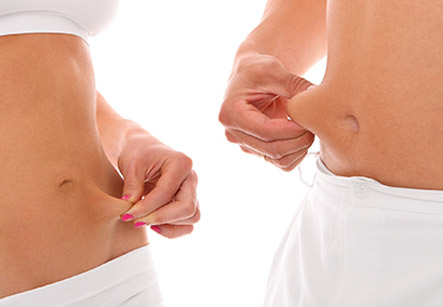Non-Surgical Fat Reduction
Introduction
Fat reduction can be done by a non -surgical method in which a special equipment is used to cause injury in small chunks of fat in body. If large amount of fat is injured, it may cause scarring in that area.
In this procedure two types of devices are used. One is ultrasound and the other is using cold energy causing lipolysis by freezing probe. Both these methods are efficacious and cause minimal discomfort to patient. Another advantage is that these procedures can be done on outpatient basis.
Surgical Procedure
Basic requirements for non-surgical removal of fat:
Regional depositions of fat around areas like abdomen flanks or back are generally the target areas for this procedure. Outer thigh fat can be reduced by ultrasound. Liposuction surgery is a better choice for larger quantities of fat as in such cases non-surgical removal has to be repeated several times to get the same results.
What if you could have the body you want without surgery and any downtime?

Principal of work:
1. Ultrasound-this procedure works like sunlight. If we hold a magnifying glass above a paper and focus sunlight on it, only the area of focus gets burnt. It spares the area above or below the focus. Similarly, by using ultrasound energy, the fat only in the area of focus point is injured. Other tissues below the focus point and the skin above the focus are spared from injury. Blood levels of fat remain unchanged. The procedure has to be repeated a few times to get optimum results. The damaged fat gets absorbed by the body.
2. Cryolipolysis-during frostbite in cold environments, fat cells in the body get frozen before skin. This principle is used in cryolipolysis. This technique freezes fat but spares skin. This may be called as controlled frost bite. The dead fat tissue is absorbed by the body in due time. Depending on the amount of fat, the number of sessions of this therapy is decided. As with the ultrasound devices, there is little chance of skin injury or change in blood levels of fats. So this is also an efficacious method.
Non-Surgical Fat Reduction Technique:
This procedure is best used for limited quantities of fat and not for generalised obesity.
As before any cosmetic procedure is undertaken, doctors opinion is essential deciding factor whether the patient is a fit candidate for this technique. A thorough discussion regarding advantages, risks, other choices of treatments should be done with the consulting doctor. As with most other aesthetic procedures, before and after photos are taken to compare treatment results.
1. Ultrasound: the areas of body for fat removal are marked by the surgeon. A technician applies thin layer of gel to the area as in any ultrasound. The pietzoelectric transducer head is moved over the desired treatment area. This session can take half an hour or several hours depending on the area. Repeat sessions may be required for the same area. Premedication is not necessary in most of the cases.
2. Cryolipolysis: The area under treatment is sucked in between two layers of metal plates and is allowed to be cooled slowly. The guidelines used currently suggest 1hour of treatment per site.
Benefits of the Non-Surgical Fat Reduction:
1. Incision is not required
2. Reduces undesirable fat in the areas like flank, abdomen, thigh or back
3. Minimal skin injury
4. It can be done in any skin types
5. Time required is less
6. Discomfort is way less than surgery
7. Less stress
Considerations: This procedure is best used for limited quantities of fat and not for generalised obesity. Favoured sites are abdomen, flank, back and thighs.
Limitations:
1. Liposuction is preferred for many patients usually
2. Repeated sessions are required for the treatment
3. Weight reduction is not there
4. The cost factor- traditional liposuction is more cost effective than this new method.
Risks/Complications:
1. Skin may be red for some time.
2. Small burns are extremely rare but have been noted with the ultrasound devices used.
3. Numbness in the treated area in some patients with both methods.
Recovery time is usually less. For most patients, daily activity can be resumed immediately.